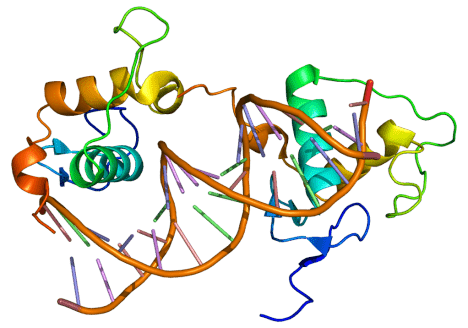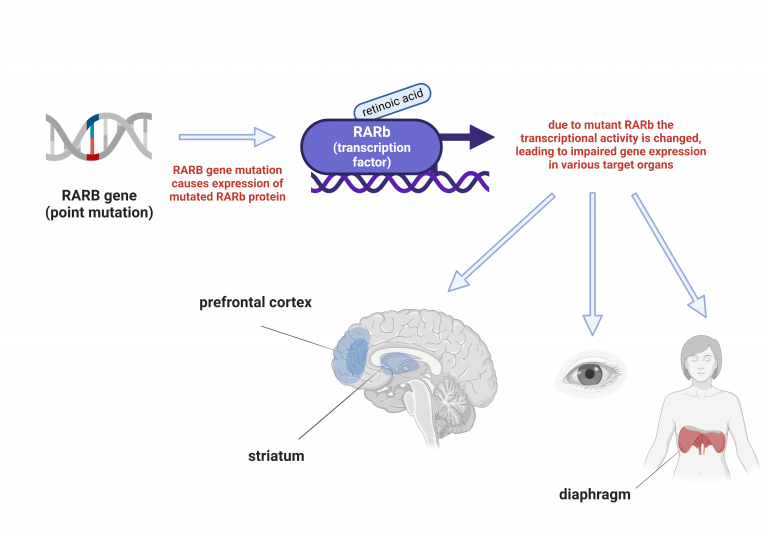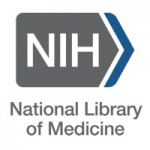What is MCOPS12?
The Gene
The retinoic acid receptor beta (RARB) gene (Gene ID: 5915) is located on the short (p) arm of chromosome 3 (3p24.2). It consists of 13 exons, four promoter regions and has a size of 423 kb in humans. RARB encodes the retinoic acid receptor beta (RARb) protein, which is a nuclear receptor and transcription factor.
Transcription factors are proteins that control the rate of transcription of genetic information from DNA to messenger RNA (mRNA) by binding to a specific DNA sequence. Their function is to regulate (i.e. turn on and off) genes in order to make sure that they are expressed in the targeted cells at the right time and in the right amount throughout the life of the cell.
Upon binding and hence activation by retinoic acid (the metabolite and biologically active form of vitamin A), RARb regulates the expression of many genes in the human body. It plays a pivotal role in the development of several organs, including the eyes, diaphragm, heart, digestive tract and brain. Furthermore, RARb is a tumor suppressor and hence has been in the focus of cancer therapy for more than two decades.

Figure 1: RARb protein
Source: Wikipedia
For more Information
The Disease
Microphthalmia, Syndromic 12 (MCOPS12) is an ultra-rare genetic and complex neurological disease. Common symptoms are developmental disorders of the eye (e.g. microphthalmia), hypotonia (low muscle tone), severe movement disorders and variable cognitive impairment. The movement disorders are progressive and often include dystonia (involuntary muscle contractions) and spasticity. In addition, malformations such as defects of the cerebellum (Chiari type I malformation), holes in the diaphragm (diaphragmatic hernia) and congenital heart defects have been observed [Srour et al., 2016].
MCOPS12 is a form of syndromic microphthalmia and is caused by a point mutation in the retinoic acid receptor beta (RARB) gene. Several variants of the point mutation have been identified, with mutation c.1159C>T (p.R387C) being the most prominent (i.e. cytosine is replaced by thymine in nucleotide 1159 causing arginine (R) at amino acid position 387 to be replaced by cysteine (C) in the RARb protein).
Depending on the point mutation variant (the specific location of the point mutation in the RARB gene), the disease symptoms can be variable with some patients having milder manifestations or displaying only a subset of them. RARB gene mutations usually occur spontaneously and are non-inherited genetic changes (de novo mutations) but can be inherited in some families in an autosomal dominant manner.
Figure 1 displays the impact of the RARB gene mutation on the various disease symptoms associated with MCOPS12: the mutation in the RARB gene causes the expression of a mutant RARb protein. Since RARb is a transcription factor, which regulates the expression of many genes in the human body upon activation by retinoic acid, the mutated RARb protein causes impaired (imbalanced) transcription of genes in various target cells.
Some of the affected target genes are involved in the prenatal development of the eyes, diaphragm and heart, thus causing abnormalities of the eye (mostly microphthalmia), diaphragmatic hernia or congenital heart defects. Furthermore, the prenatal and postnatal development of the striatum and prefrontal cortex in the brain is also affected, which is the root cause for the movement disorders and the variable cognitive impairment observed in MCOPS12 patients.

Figure 1: RARB gene mutation as the cause for MCOPS12
MCOPS12 was discovered only some years ago and knowledge is still scarce. In 2013, the RARB gene mutation and associated symptoms were described for the first time in scientific literature [Srour et al., 2013]. Until now, almost all of the identified patients are children.
Fortunately, academic research has evolved in recent years with the goal to understand the mechanism of the progressive movement disorders, which are the most common and homogenous disease symptoms in MCOPS12 patients. For a more detailed explanation on the genetics and pathophysiology of MCOPS12 related movement disorders please have a look at the section “Our Work / Ongoing Research”.


